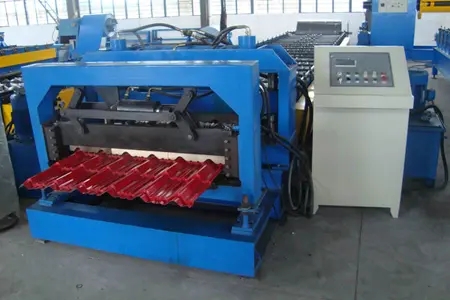
The Crash Barrier Cold Bending Machine A Revolution in Road Safety Infrastructure
As urbanization accelerates and traffic volumes increase, the demand for effective road safety measures rises dramatically. One crucial aspect of road safety is the implementation of crash barriers. These barriers not only protect vehicle occupants during accidents but also prevent vehicles from veering off roads and into dangerous areas. Among the various methods of producing crash barriers, the cold bending machine stands out as a cutting-edge solution that streamlines the manufacturing process while enhancing the quality and durability of the barriers.
Understanding Cold Bending Technology
Cold bending refers to the process of deforming materials, typically metals, at room temperature without the application of heat. This technique allows for precise shaping of materials while maintaining their structural integrity. In the context of crash barriers, cold bending machines are designed specifically to bend and shape steel sheets into the desired profiles needed for effective crash barriers.
The cold bending process offers several advantages over traditional hot bending methods. Firstly, it reduces the risk of material distortion and weakening that can occur at high temperatures. Secondly, it minimizes energy consumption, making it a more sustainable choice for manufacturing. Lastly, cold bending machines typically have a faster production rate, allowing manufacturers to meet the increasing demand for crash barriers efficiently.
Features of Crash Barrier Cold Bending Machines
Modern crash barrier cold bending machines are equipped with advanced technology that enhances their performance and versatility. Most machines feature
1. Automated Controls Many cold bending machines are equipped with CNC (Computer Numerical Control) technology, ensuring high precision in bending angles and dimensions. This automation reduces human error and increases production efficiency.
2. High-Quality Materials These machines are specifically designed to work with high-strength steel that meets safety standards. The ability to maintain the material’s integrity during the bending process is crucial for ensuring that the crash barriers can withstand significant impacts.

3. Versatile Bending Capabilities Advanced machines can produce various profiles and designs of crash barriers, including W-beam, Thrie-beam, and concrete barriers. This versatility allows manufacturers to cater to diverse needs in road safety projects.
4. Compact Design Many modern cold bending machines are designed to occupy less space while still maintaining high productivity levels. This compactness is particularly beneficial for small to medium-sized manufacturing facilities looking to optimize their production footprint.
The Importance of Crash Barriers
Crash barriers play an essential role in enhancing road safety. These barriers are strategically placed along highways, bridges, and urban roads to protect vehicles from roadside hazards such as trees, cliffs, and pedestrians. Their primary function is to absorb the impact of vehicles during collisions, thereby reducing the severity of accidents and saving lives.
Moreover, crash barriers help in reducing the incidence of run-off-road crashes, which are among the most dangerous types of accidents. By effectively containing the vehicles, barriers prevent them from rolling over or colliding with oncoming traffic, contributing to overall road safety.
Conclusion
The introduction of crash barrier cold bending machines marks a significant advancement in the manufacturing of road safety infrastructure. By leveraging the advantages of cold bending technology, manufacturers can produce high-quality, durable crash barriers more efficiently. As the world continues to grapple with increasing traffic volumes and the corresponding need for enhanced safety measures, the role of innovative equipment like cold bending machines cannot be overstated.
With ongoing improvements in machine technology and materials science, the future of crash barrier production looks promising. By investing in advanced manufacturing solutions, the road safety industry can ensure that communities are better protected, ultimately leading to safer roads and a reduction in traffic-related injuries and fatalities. As we embrace these advancements, it is imperative that stakeholders prioritize the integration of such technologies into road safety planning and implementation strategies for a safer tomorrow.